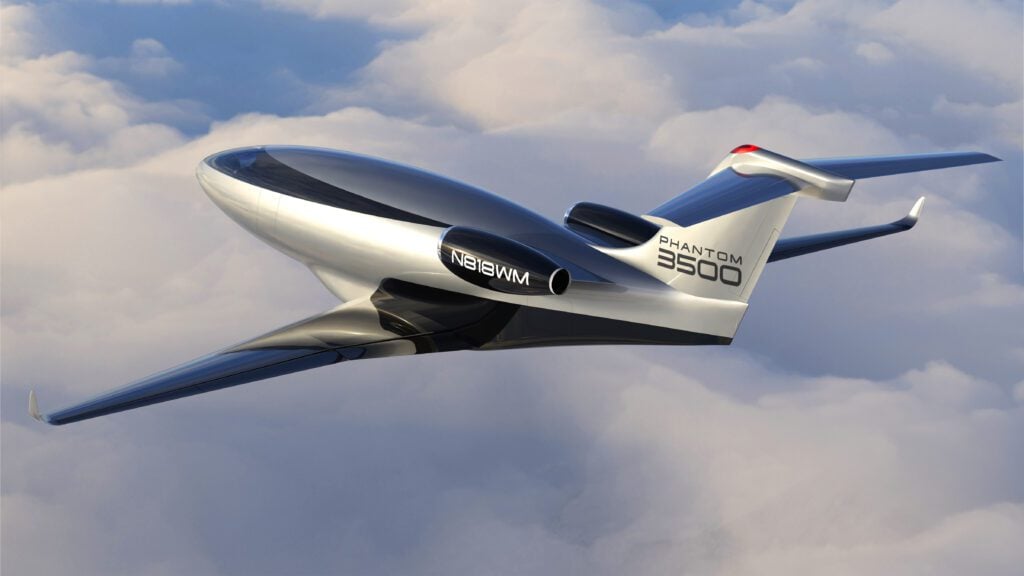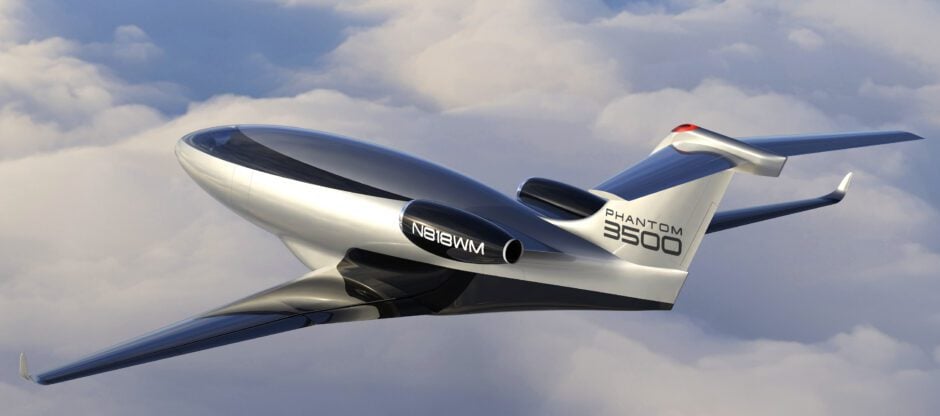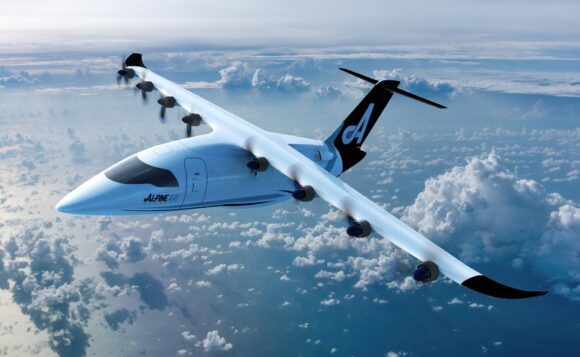
Flexjet, a major player in the fractional ownership segment, ordered 300 aircraft from Otto Aerospace, a start-up building a new business jet. The Phantom 3500 aircraft is unique in its design, which relies on laminar flow and advanced aerodynamics to improve efficiency and sustainability.
The Phantom 3500

The Phantom 3500 features no passenger windows; instead, it replaces them with interior video screens that provide an exterior view via cameras. By focusing on laminar flow and advanced manufacturing techniques to eliminate even microscopic flaws, the aircraft is projected to improve fuel efficiency by 60% compared to existing competitors. Otto’s improvements go well beyond just carbon emissions.
Contrails significantly contribute to climate change by trapping heat in the atmosphere. The laminar flow aircraft eliminates contrails, enabling more efficient cruising at optimized altitudes while dramatically reducing a significant element of aviation emissions. With respect to carbon, the Phantom 3500, flying at 500 mph, has similar carbon emissions to an electric car traveling at 50 mph. A comparison of the projected Phantom 3500 performance against a Tesla Model C resulted in seat-mile emissions of 36 grams to 34 grams, a minimal difference, despite the order-of-magnitude difference in speed.
The firm order for 300 aircraft from Flexjet also includes unspecified additional purchase options. The first flight of the Phantom 3500 is expected in 2027, with entry into service scheduled for 2030.

“For 30 years, Flexjet has led through innovation as opposed to imitation, introducing tomorrow’s standards, not reacting to yesterday’s expectations,” said Ken Ricci, Flexjet’s Chairman. “The Phantom 3500 exemplifies that approach perfectly, marking a bold step into a future where an aircraft’s efficiency and sustainability stand alongside speed, comfort, and range as defining standards. This collaboration with Otto Aerospace further affirms our leadership role in delivering to fractional aircraft owners the future of luxury private aviation.”
“Flexjet’s decision to build its fleet around the Phantom 3500 speaks volumes about where aviation is headed. As one of the largest business jet orders in private aviation history, this marks a turning point in the industry’s move toward sustainable and efficient air travel,” said Paul Touw, CEO of Otto Aerospace. “The Phantom 3500 will redefine private aviation, providing Flexjet with a fleet that dramatically reduces costs while expanding operational capabilities and enhancing the customer flying experience.”
The Bottom Line
Technological improvements are generating significant improvements in aircraft efficiency, from more advanced engine design to aerodynamics through blended wing bodies and through materials, such as the advanced laminar flow composite design of the Otto Phantom 3500.
The key to laminar flow is clean surfaces without flaws, which requires a higher precision in composites manufacturing. Maintaining those surfaces will be key to ensuring long-term carbon reductions, and Flexjet will become an authorized Otto service center to maintain aircraft for both its own fleet and other customers.
While some questions remain about flaws impacting laminar flow, including “ramp rash” accidents and surface repairs, the promise of reduced emissions and improved economics is attractive. We look forward to the first significant application of whole-aircraft laminar flow in the business jet market.
Views: 262



